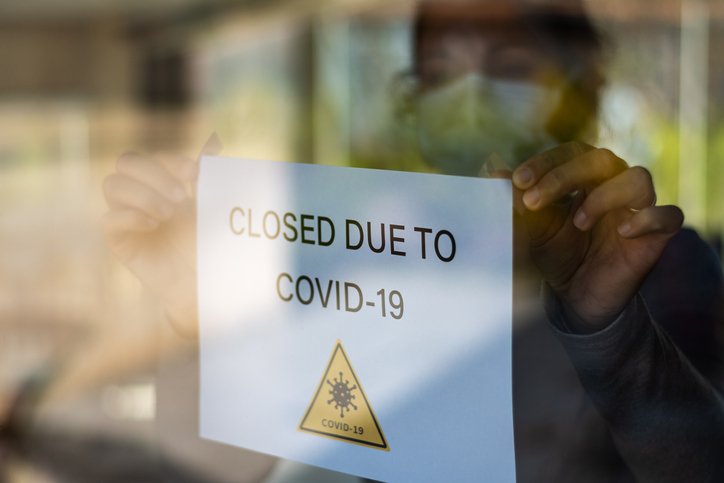COVID-19–compared to other pandemics–is historic because of world response
Article body
Matt Malczycki, Joseph A. Kicklighter associate professor and director of undergraduate studies for Auburn University’s Department of History, comments below on how COVID-19 compares to other pandemics in history—saying COVID-19 is historic not so much for its number of cases but for the speed at which the world moved to stop its spread.
How does this pandemic rank/fare compare to others, as far as scope and global impact?
What makes COVID-19 historic so far is the speed at which the world moved to stop the spread of the disease. Yes, the quarantines and the shutdowns could have saved lives if they had happened sooner, but, in the grand scheme of human history, the global response to COVID-19 set speed records. At just about any other time, we would not have been able to act as thoroughly as we did as quickly as we did. Millions more would have been infected and died without modern information technology and medicine. In the parlance of our times, to some extent we did “flatten the curve,” and we did it better than we ever have.
In terms of the percentage and numbers of people infected and killed, COVID-19 is hardly historic. As of this writing on May 21, COVID-19 has killed 333,000 people worldwide. For the sake of argument, let’s triple that then round up to an even one million. One million people is about 0.0125% of the world population of 8 billion, and, remember, we’ve already tripled the number of actual deaths and rounded up. The bubonic plague pandemic known as the “Black Death” (began ca 1347 AD/CE) wiped out as much as 25% of the world’s population and perhaps as much as 50% of the European population in just a few years. The Plague of Justinian (began ca 541 AD/CE; also bubonic plague), might have been even deadlier than the Black Death. To give yet another example, when Europeans started coming to the Americas in the late 1400s, they brought smallpox, which killed up to 90% of the Native American population, as well as an unknown percentage of the West African population first exposed to the disease through the slave trade. Also, both in terms of numbers and percentages, the 1919 Flu Pandemic was deadlier than COVID-19 (thus far, at least), as were some relatively forgotten flu pandemics of the late 1950s and late 1960s. But whereas all of those other pandemics are “just history,” this one is real for us today.
The fact is that for most of human history, epidemics and even pandemics were the rule rather than the exception. If we lived in any other century, something like COVID-19 would have been terrible, but we wouldn’t have been as surprised by it as we are today. Deadly outbreaks of cholera, typhus, scarlet fever, measles and smallpox were awful, but very normal parts of the human experience. What makes us different from our ancestors is that, in the age of modern medicine, we are surprised to find ourselves facing a highly contagious and lethal disease for which we have no known cure. I can almost hear my not-too-distant forebears saying, “Well, bless your little heart: you’re almost 50 years old, and you’re just now facing your very first killer pandemic.”
How might COVID-19 overshadow other history that is being made at this time, and has that happened in the past with previous pandemics?
We can’t know for sure. The seeds of history are planted every day. When they will sprout and how they will grow is unknowable. (Can you tell I’ve been gardening during the shutdown?) A century from now, historians might be focusing on some other aspect of the 2020s and mention COVID-19 only in a footnote. For example, the 1919 Flu Pandemic wasn’t a popular historical topic until recently. To be honest, I didn’t know about the killer flus of the ‘50s and ‘60s until I started poking around the internet a few weeks ago.
How does history typically treat pandemics looking back on them decades later?
There are professional scholars who specialize in the history of science, medicine and diseases, but they are a small subset of all researchers. That said, their numbers might increase as a result of COVID-19. Something like that happened in my field of Middle East Studies because of 9/11.
It may remain to be seen, but might future decades be known as the post-coronavirus era?
It’s too early to say. There are just too many variables and “what ifs.” If we find a vaccine this summer and we’re back to normal next year, then COVID-19 will probably soon be “just history.” I hope that COVID-19 won’t even merit a trick bonus question on history tests of the not-too-distant future. But if COVID-19 continues to spread and kill people and if the world economy does not recover, then the pandemic might very well mark the end of one era and the beginning of another. Hindsight is the great luxury of historians, and, as the popular axiom has it, “Hindsight is 20/20.”
Auburn University is a nationally ranked land grant institution recognized for its commitment to world-class scholarship, interdisciplinary research with an elite, top-tier Carnegie R1 classification, life-changing outreach with Carnegie’s Community Engagement designation and an undergraduate education experience second to none. Auburn is home to more than 30,000 students, and its faculty and research partners collaborate to develop and deliver meaningful scholarship, science and technology-based advancements that meet pressing regional, national and global needs. Auburn’s commitment to active student engagement, professional success and public/private partnership drives a growing reputation for outreach and extension that delivers broad economic, health and societal impact.






